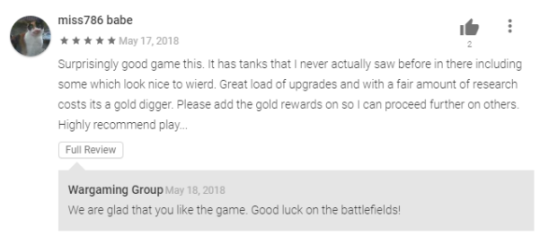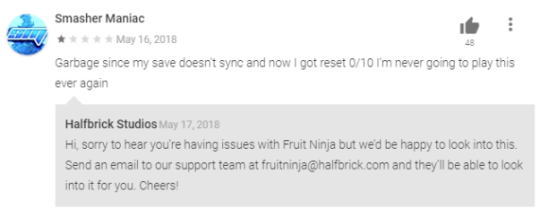This is a guest post by Jakub Chour, Mobile Marketing Manager. To learn more about industry insights and best practices, sign up for the AppAgent newsletter here.
Getting 5-star ratings for your app is one surefire way of increasing downloads. They help users to understand what makes your app special, and to give them the confidence they’re making the right choice before an install.
Ratings can also play a role in raising your app’s ranking too. At AppAgent, we’re experts at helping developers promote their apps. Here are our top tools for working with app user reviews.
Quick refresher: How app ratings influence app rankings
App ratings provide very strong signals for both Google and Apple that your app is useful. If the app is useful (and users like it) then it makes sense for them to promote it. Quite simply, ratings influence rankings.
But how good do the rankings need to be to have an impact?
Research findings vary, but Thomas Petit’s ranking guide provides a useful illustration:

What can you do to improve your ratings?
Improving your rankings is a bit of common sense, and a bit of commitment. You need to invest some time and resources in engaging your users. Here are some ways you can improve your ratings:
1) Answer the call
If you’ve got a number of bad (or not-so-great) reviews don’t avoid them. While you can’t change them, don’t ignore them.
Our advice is to answer every review – even if they are bad or don’t make sense.
2) Make someone responsible
If you have a support team, there is a chance that they are already doing this. Or perhaps not. Perhaps they are doing it at random. If you don’t know whether someone is answering every bad review, then you’re not doing enough.
To be effective you really need to assign the task of managing reviews to someone who understands how your business works (at least a little bit).
A summer intern will probably just generate dull answers that frustrate users. Junior product managers or members of staff with over 1 year’s experience will do a much better job.
3) Take advantage of Apple StoreKit
Since iOS 10.3 you don’t need to take your users to the App Store to review your app. Instead, they can give you a rating inside your app. It’s a common-sense addition and something that Google has done for years.
To get the maximum impact (and hopefully the best reviews) use it wisely. We usually advise our clients to ask for reviews preferably in the “WOW” moments in their app. When the next level is achieved, a purchase is completed, etc. It’s about capturing them at their happiest.
How should you respond to app reviews?
Be human – 5 copy-pasted answers in a row are not human responses. Take some time to think about your reply. Adjust it, and personalize it, for every user.
Be compassionate – you don‘t need to apologize for everything (unless you want to). To get an insight into the reasons for bad reviews try to understand the motivation of the user. Put yourself in their position and consider why they may be upset or frustrated. Try to explain yourself, but do it briefly. If a review is positive then add a reply to show you care.

Be reachable – maybe the reviewer wants a longer discussion. If you think people want to chat, then give them a way to contact you if you think it’s something worth discussing. Even if it’s not appreciated immediately by that particular user, some other users (or potential users) will notice it.

Be prepared – for users to change their minds. You would be surprised how many users are ready to change their minds – and their reviews – if they are satisfied with your support. If you think your user may have changed their mind and might be prepared to reconsider their review, then provide them with instructions on how to do so.
The 5 best app user review tools
Both Android and iOS can be configured to send you an email when a new user review is submitted, but only Android has an API that enables you to access it programmatically. If you have your own support team that uses tools like ZenDesk or (similar), then an email won’t suit you.
Here are AppAgent’s 5 favorite app user review management tools which can help you.

Good news: you already may have it. If you’re already using Zapier, you can get its user review services for FREE. If not, it’s just $20 USD per month.
Zapier has a native connection to ZenDesk which makes set-up simple. If you are already using it, you can set a rule which will forward an email from the App Store to ZenDesk in the second step.

ASO tool included, $49 USD per month.
Appfollow is a comprehensive package for complete app care and includes ASO tools like rankings, keywords, etc. For ASO, it’s useful, but we don’t think it’s good as the other tools available. One nice feature is that if you use your login from the iTunes console, you can reply directly from ZenDesk.

Review sentiment analysis, $39 USD per month.
Not only does Appbot send your reviews to ZenDesk, it also uses machine learning to analyze the sentiment of your reviews and separates them into different issues (payments, bugs, features etc.). It’s doubly useful if you add the Google Play app if you have one, because it may have many more reviews than your new iOS app.

Price champion, $10 USD per month. ALSO OUR CHAMPION.
Our champion is a simple tool that forwards app reviews to ZenDesk and other CRM tools. Every ticket has a deep link that allows you to reply in the App Store (or Google Play). It’s perfect for its simplicity and its price tag.

Complex feedback solution. $000s USD per month.
Apptentive is a comprehensive tool for managing app user feedback. Offers triggering conversations inside the app, user feedback based on rules and events, rating prompts, in-app surveys, etc.
.




















